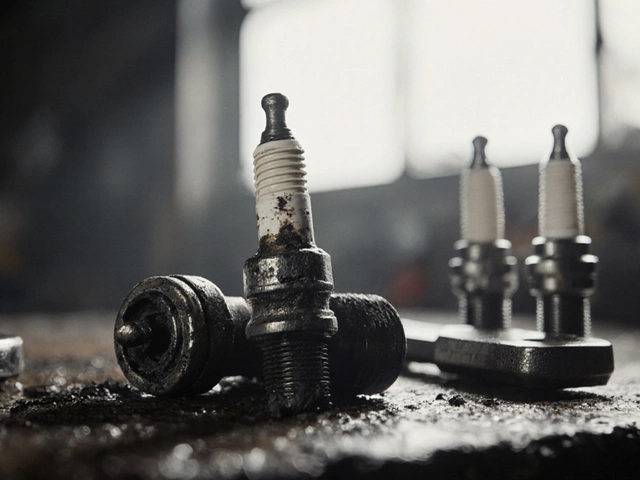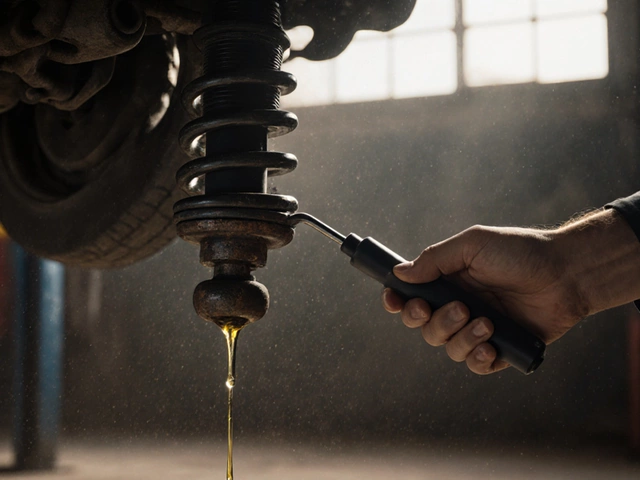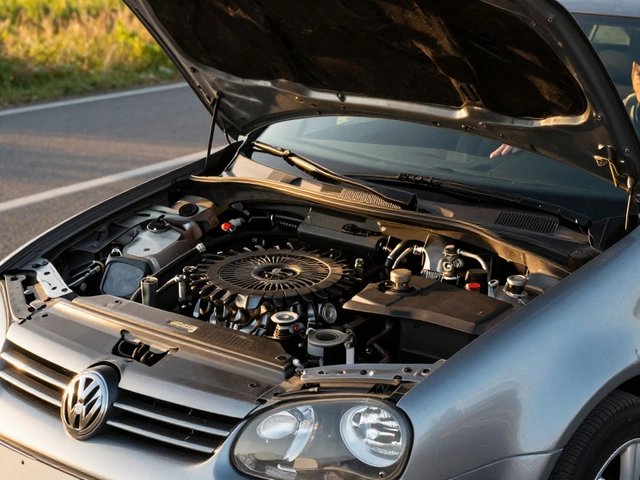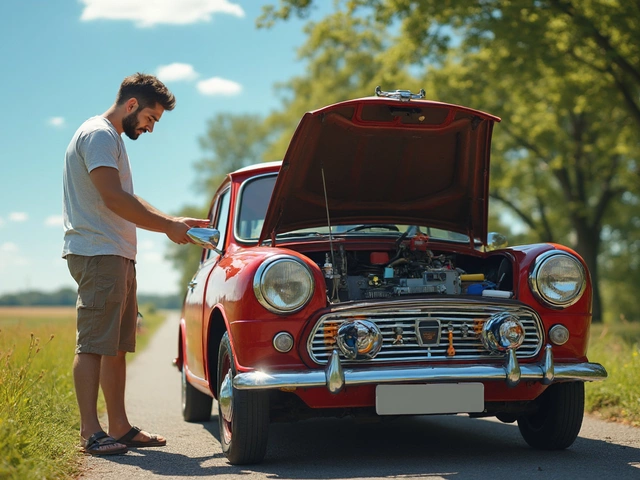No one likes that sinking feeling when you’re not sure if your car’s brakes are about to quit on you. Brake pads don’t last forever—if you drive a lot, slam on the brakes in traffic, or carry heavy loads, they burn out even faster. Knowing the warning signs can keep you from a much more expensive (and dangerous) problem down the line.
The easiest signals to catch? Strange sounds. If your brakes squeal, screech, or grind, your pads are probably begging for attention. Many brake pads have a tiny metal tab purposely designed to squeal when things get too thin. Hear that high-pitched screech every time you stop? That’s not your car being dramatic—it’s a built-in warning telling you it’s time for a change.
- Noisy Telltale Signs
- Feeling the Pedal and Steering
- Visual Checks You Can Do at Home
- Serious Risks If You Ignore Worn Brake Pads
Noisy Telltale Signs
Most people first notice their brake pads are worn out because of noise. Seriously, your car can start sounding like an old shopping cart if you ignore it long enough. The most common sounds are squealing, squeaking, or grinding whenever you press on the brake pedal. Those aren’t just random quirks—manufacturers build a metal "wear indicator" into many pads, so when things get thin, the metal scrapes the rotor and makes that loud, annoying sound to get your attention.
Here’s what those noises actually mean:
- Squealing or high-pitched screech: Usually, this is the wear indicator doing its job. It means the brake pads are pretty low, and you should replace them soon.
- Grinding: If it sounds like metal on metal, your brake pads might be totally worn down, and now the backing plate is carving up your rotors. This is bad news and usually leads to more expensive repairs.
- Unusual clicking or rattling: Sometimes, worn pads move around more than they should. If you hear rhythmic clicking as you roll, a loose pad is possible—don’t ignore it.
Don’t confuse normal brake dust or a one-off squeak with a true warning sign. The noises that matter don’t go away after a single drive—they show up every time you hit the brakes. And just so you know, some premium performance pads can be noisy even when they’re new, but the real trouble is a change in noise or new sounds you haven’t heard before.
Want a quick fact? According to auto repair shops, roughly 6 out of 10 brake jobs are first prompted by customers reporting weird brake noises. Your ears usually know before your wallet gets hit. When in doubt, listen closely—your car’s not making noise just to annoy you.
Feeling the Pedal and Steering
You don’t need to be a pro mechanic to feel when something’s off through the pedal or steering wheel. A worn out brake pad can mess with how your car feels and responds—even if you don’t hear a peep.
If your brake pedal suddenly feels soft or squishy, that’s a huge red flag. Normally, when you press the pedal, it should feel firm and get stiffer as you press down. Sponginess usually means your brake pads are worn thin, or you might even have air or moisture in your brake lines. Either way, it’s not safe to keep driving like this.
Notice your steering wheel shaking or vibrating when you hit the brakes? That’s another classic sign your brake pads, or sometimes the rotors, aren’t doing their job right. When pads wear unevenly or get down to metal, you can feel it in your hands as a wobble—especially at highway speeds or during hard stops.
Here’s a quick list of pedal and steering warning signs:
- Pedal feels soft, squishy, or sinks to the floor
- Steering wheel vibrates while braking
- Car pulls to one side when slowing down
- Needs extra pressure to get the car to stop
According to a survey from the U.S. Department of Transportation, brake issues cause about 22% of vehicle crashes related to mechanical failure. Ignoring pedal and steering weirdness with your brake pads isn’t just risky for your car; it puts everyone in your lane in danger too.
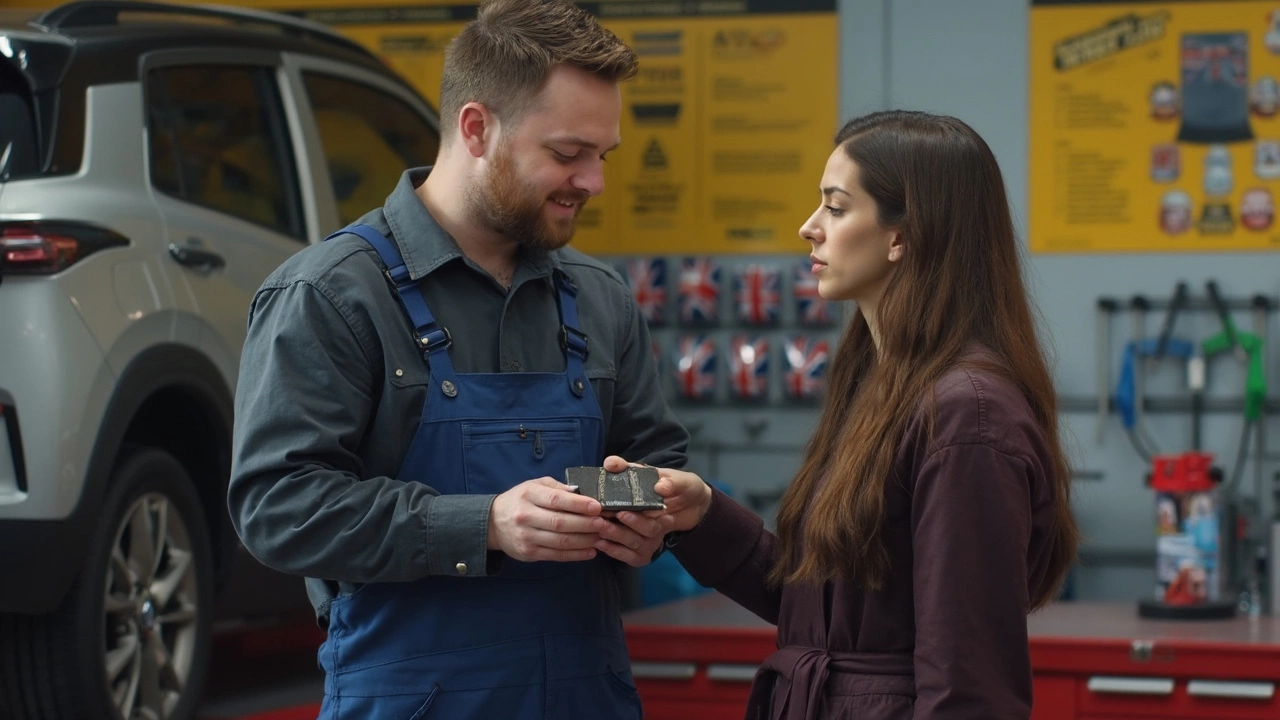
Visual Checks You Can Do at Home
You don’t need to be a mechanic or own a fancy garage to check your brake pads at home. Just a flashlight, maybe a jack, and a little motivation. Here’s what you can do before paying someone else to look.
- Look Through the Wheel: Most car wheels have openings big enough to sneak a look at the brake pads. Find the pad—it's the flat, rectangular piece pressed up against the shiny metal disc (called the rotor).
- Measure What’s Left: If you see less than a quarter inch (about 3-4mm) of pad, you’re cutting it close. Anything thinner, and it’s time to swap them out.
- Check for Uneven Wear: The pad surface should be pretty even. If it looks slanted, glazed, or cracked, you probably have a problem that needs quick fixing.
- Watch for Dust and Debris: Lots of dark brake dust on your wheels is normal, but suddenly seeing less can mean your pads are worn down to the metal.
- Jack Up for a Better Look: Want to be sure? Jack up the car and take the wheel off. This way, you get a full, clear view of the brake pad thickness. Just make sure the car is secure before you pull the wheel.
It’s smart to check all four wheels. Brakes can wear faster on one side, especially up front because they do most of the stopping work. According to plenty of repair shop data, your front brake pads usually wear out 30% quicker than the rears.
| Spot | What to Watch For | What It Means |
|---|---|---|
| Pad Thickness < 1/4 inch | Pad almost gone | Replace as soon as possible |
| Cracks or Glazed Pad | Pad looks shiny or cracked | Brake overheating or faulty pad |
| Uneven Wear | Pad isn’t flat | Possible caliper or alignment issue |
Don’t ignore what you see here. Quick home checks save you from sudden emergencies, and it really doesn’t get much simpler than shining a flashlight and taking a peek.
Serious Risks If You Ignore Worn Brake Pads
Rolling the dice with worn brake pads isn’t just about annoying noises. Letting them wear down puts you, your passengers, and everyone else on the road at risk. Here’s what can actually happen if you don’t tackle this problem on time:
- Longer stopping distances. When your brake pads are thin, it takes way longer for the car to stop, even if you slam the pedal.
- Damage to other brake parts. With little pad left, the metal part of the brake caliper can grind right up against the rotor, which ruins both. Rotors aren’t cheap—they can cost triple the price of new pads.
- Loss of control. Pads that are too thin don’t grip well, especially if the roads are wet or slick. You might end up sliding through intersections or losing control altogether.
- Unpredictable brake failure. Sometimes brakes can give out completely without much warning if pads are totally worn. That’s the worst-case scenario, especially at highway speeds.
Want some real numbers? According to the National Highway Traffic Safety Administration, brake problems are blamed for around 25,000 crashes every year in the U.S. Alone. Skipping brake pad maintenance could put you in this statistic.
| Problem | Possible Cost |
|---|---|
| Ignoring worn brake pads | New rotors: $300+ per axle |
| Braking system failure | Towing + Repairs: $500–$1,500 |
If you hear or feel something odd, don’t blow it off. Getting your pads replaced before they’re toast is way cheaper—and less stressful—than fixing the aftermath. You’re not just protecting your wallet, you’re also keeping yourself and others safe.



